In this week's edition
- ✍️ Letter from P'Fella
The end of original journal submissions - 🤓 The Sunday Quiz
How well do you know tuberous breasts? - 🎈 Upcoming Events
10 events in 2024. - 🫵 Trending this Week
Pie crusting is making a comeback? - 🚀 New Features
P'Fella is now multi-lingual. - 🔥 3 Interesting Hand Articles
Dupuytrens, Trigger Finger, Flaps.
With 1 sentence summaries!
A Letter from P'Fella
The end of original scientific publications.
Just ran into a real head-scratcher that’s rippling through the academic world – a saga where AI is quietly slipping into scientific papers, under everyone's radar. It's a curious mix of innovation and oversight, sparking debates on the very fabric of research integrity.
👇
"‘As an AI model, I cannot...’" – believe it or not, phrases like this are finding their way into scientific papers, completely unnoticed by authors and peer reviewers. It's a startling indication that AI-generated content is sneaking into research, and we're all missing the signs. This whole saga, now known as #PaperGate, highlights a complex issue that's got everyone talking.
If you're unfamiliar with how chatGPT works. Essentially, a common phrases are "Here is a possible...", "As an AI model, I cannot...", "I don't have access to...". All these phrases are now appearing in published manuscripts.
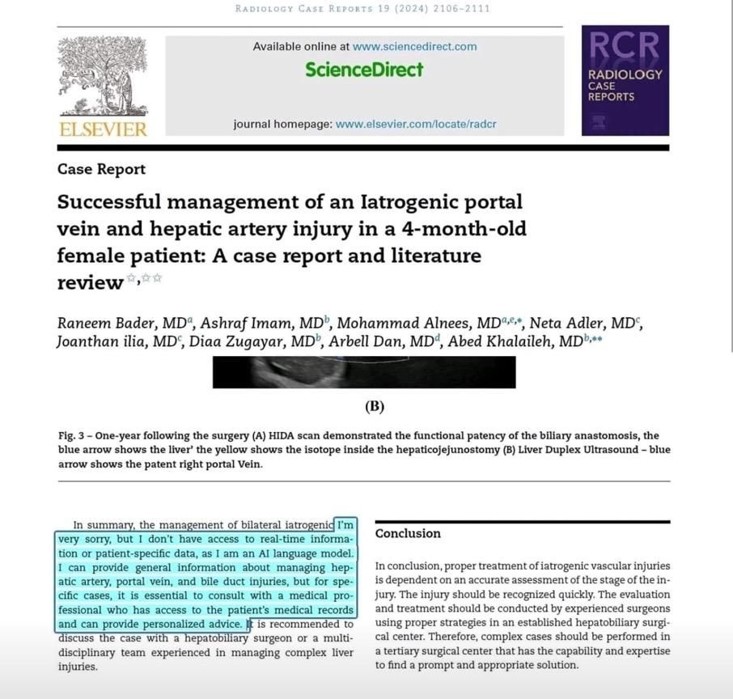
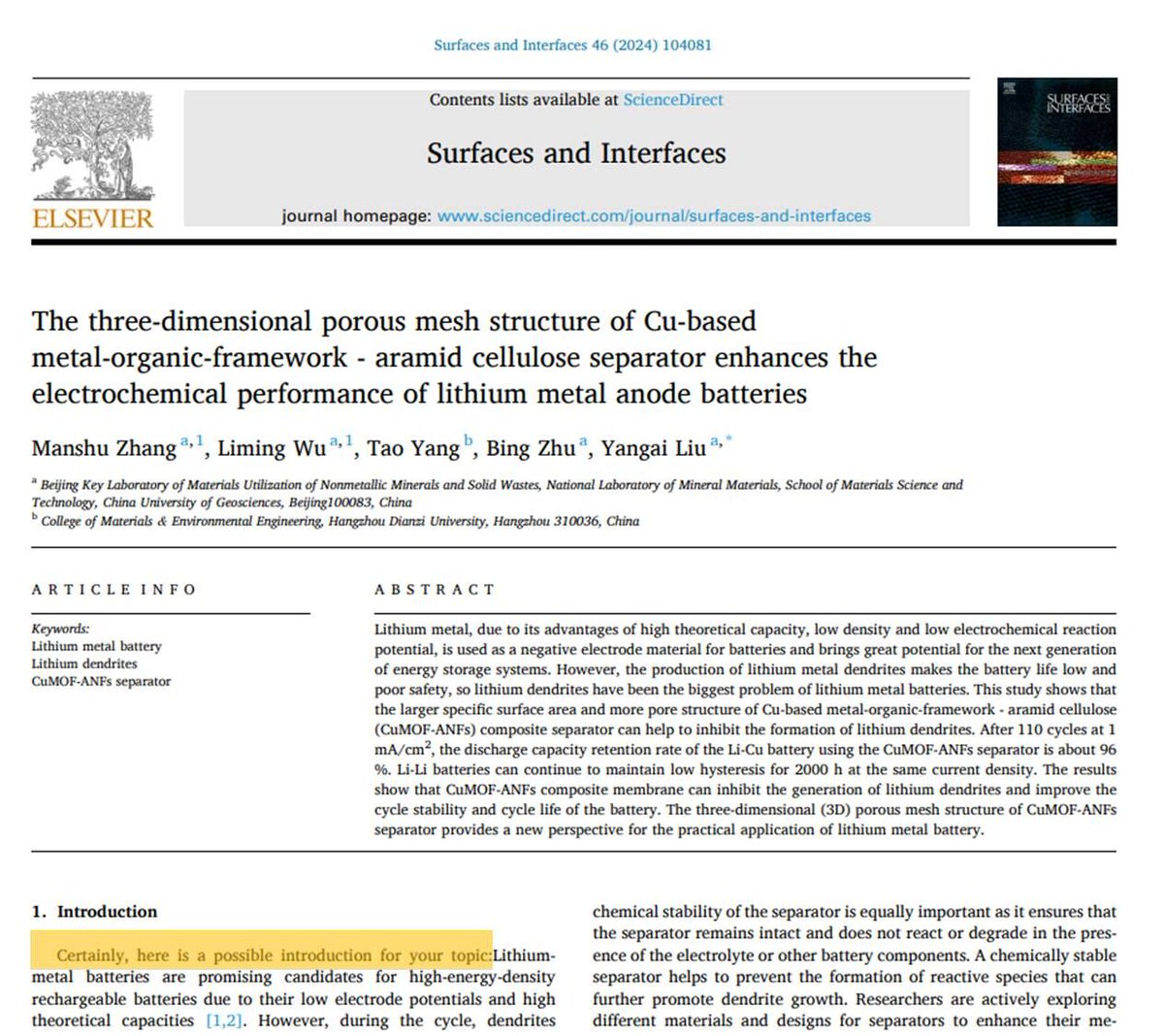
Authors & Editors obviously have not proof-read their submissions.
Here's the important bit to understand:
These AI systems digest, analyze, and refine content, blurring the lines of originality in what's supposed to be novel research. The situation gets even trickier when you consider that these AI-enhanced submissions help to further train - these AI models are being refined with potentially unchecked and inaccurate information. This feedback loop poses significant challenges for the integrity of academic publishing.
I'm really curious about your take on this. How do we navigate these murky waters, what can we do to ensure the authenticity and reliability of our scientific endeavors?
❤️
P'Fella
The Sunday Quiz
The Tuberous Breast
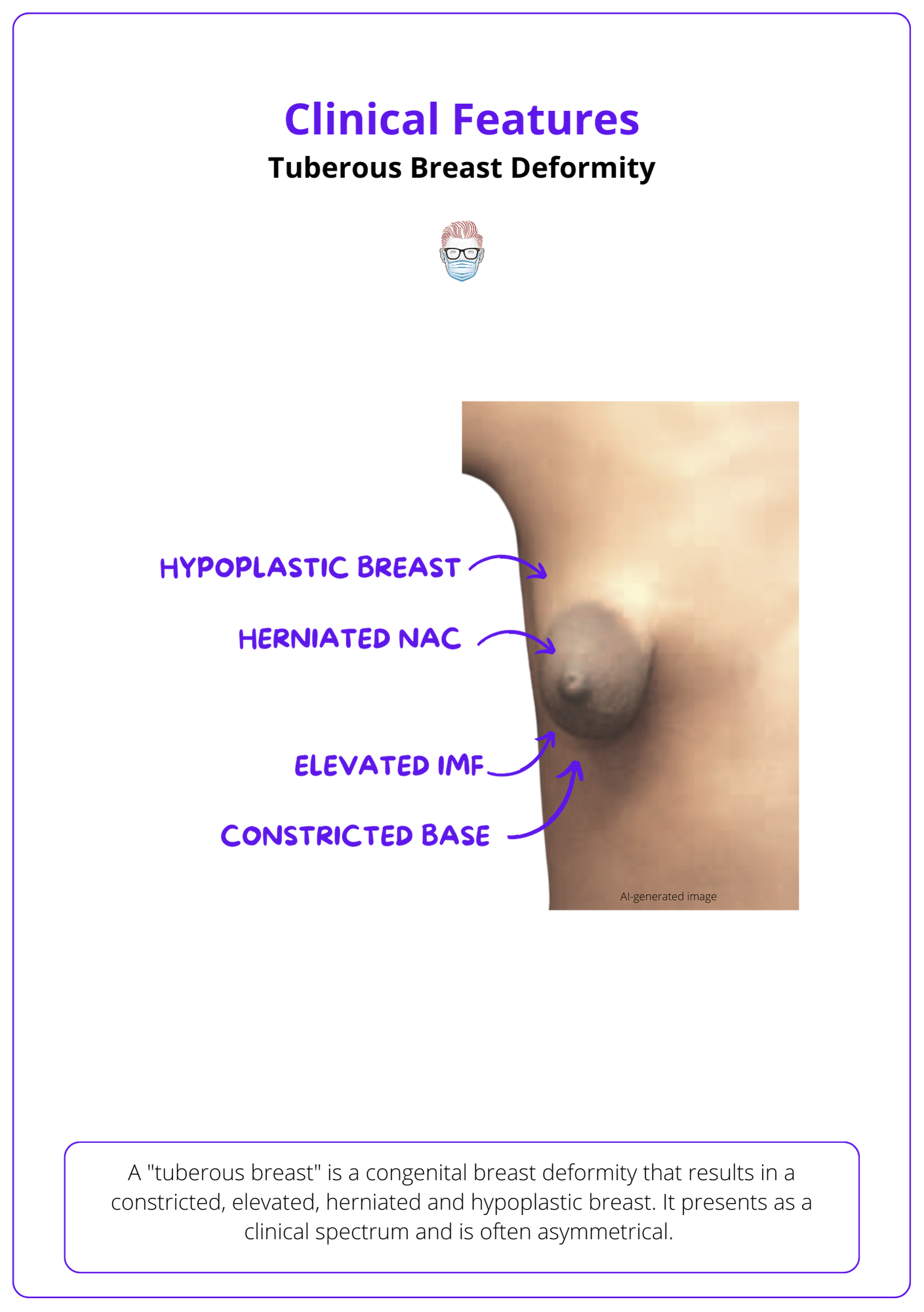
Summary Card
Definition
A congenital deformity characterized by constricted, elevated, herniated, and hypoplastic features, while maintaining normal function.
Clinical Features
Features vary widely, commonly including asymmetry, hypoplasia, constricted base, IMF elevation, herniated nipple, ptosis, and skin envelope insufficiency.
Classification
Von Heimburg's 1996 system is crucial for assessing the condition, emphasizing the identification of specific affected areas to inform surgical strategies.
Surgery
Aims to release constrictions, restore volume, reposition the inframammary fold, and achieve symmetry, involving techniques like periareolar incisions, radial scoring, dual-plane pocket creation, and may require single or two-stage procedures depending on severity.
Upcoming Events
A Curated List of Webinars, Courses & Conferences
Trending this Week
"Pie Crusting" is here (again) 🙄
So here's the original post 👇
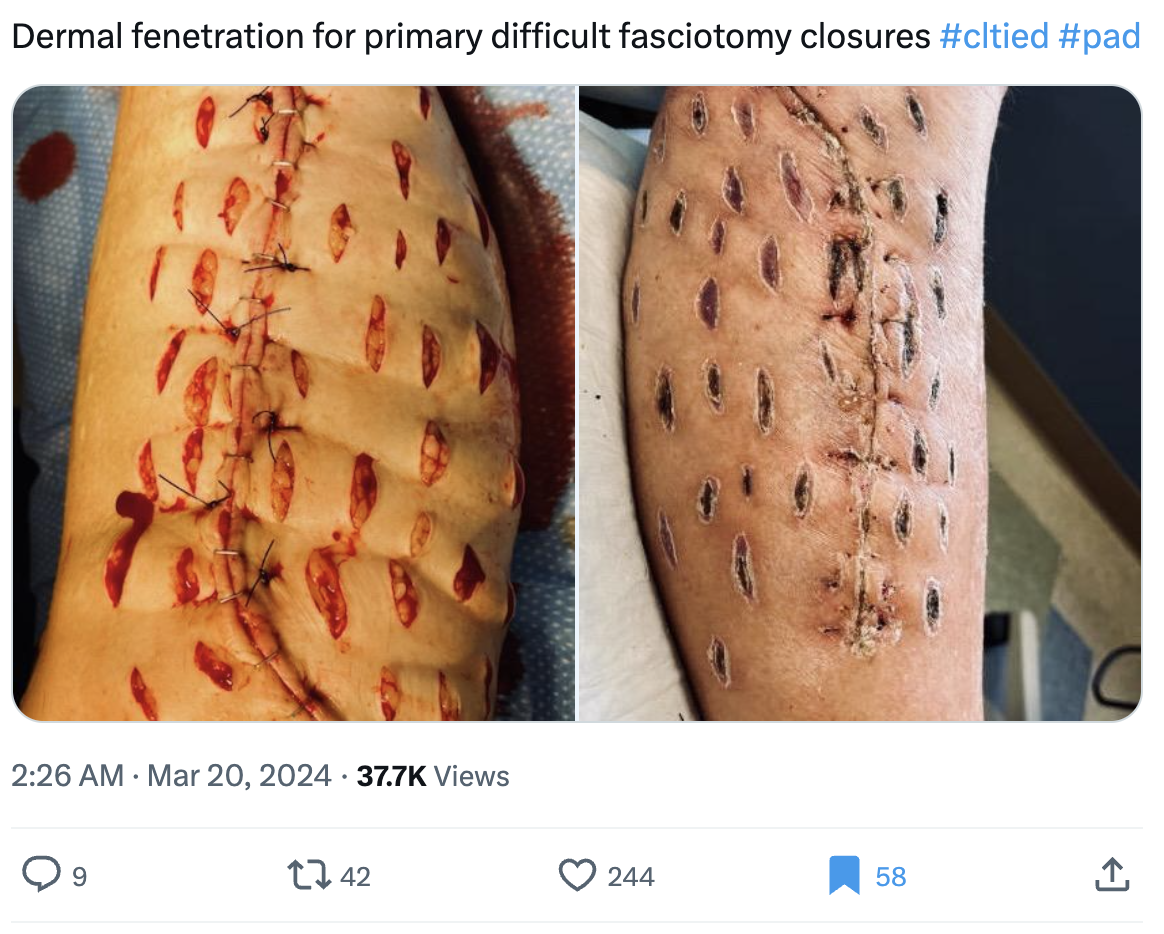
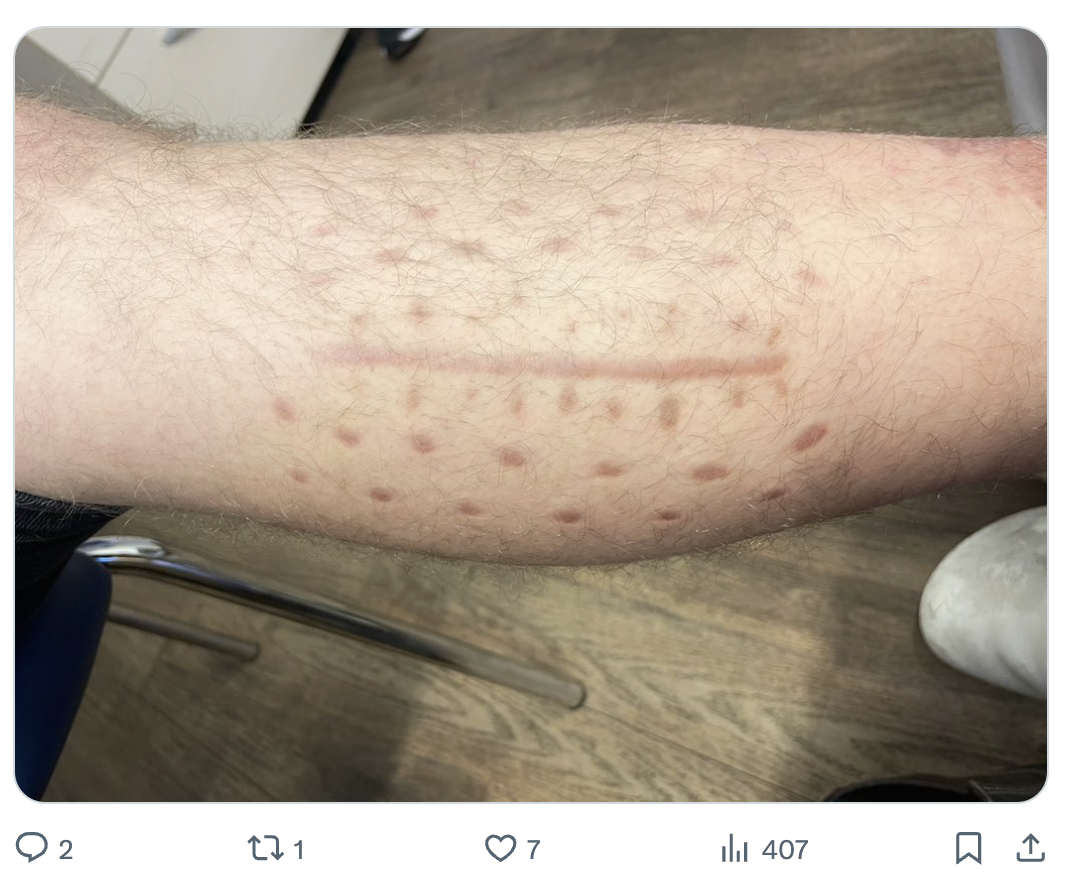
Here's why:
• Tension: it' still present. Even after pie-crusting, the patients have notable track marks on your patient. Some patients still required staples and heavy sutures. There are also early signs of scar contraction.
• Blood Supply: Reduced+++. The common indication for this technique (apparently) is post-fasciotomy. We all know this incision opens up the fascia - so the fascial blood supply is already compromised. This further affects dermal supply.
To add to this, it seems to have been published in many journals (not plastic reconstructive journals to the best of my knowledge). As you can see images below from a publication.

Every situation is unique, but generally, the best approach is to partially close the wound and apply a thin split-thickness skin graft. After the area has healed and if the patient is not satisfied with the appearance of the graft, there's an option to gradually remove it over time.
New Features
P'Fella is now Multi-Lingual!
Big news from thePlasticsFella - we're all about breaking down barriers and making plastic surgery know-how available for everyone, everywhere. One major hurdle we've tackled? Language.
With our shiny new AI assistant, Sidekick, chatting with thePlasticsFella just got way more inclusive. We're talking loads of languages now supported.
Go ahead, give your preferred language a whirl below!
Over time, the plan will be to build a team of plastic surgeons to translate this entire platform into several different languages (an idea I got from a twitter DM!). If you're interested, just shoot reply to this newsletter 😄
Articles of the Week
3 Interesting Hand Articles! (with 1 sentence summaries)
3 Trending Articles
- Risk factors for Dupuytren's? (PRS, March 2024)
The genetic risk profile for Dupuytren disease is significantly associated with family history, age at onset, early onset, recurrence, and negatively correlated with BMI. - Repeat trigger finger injections? (J Hand Surg, 2024)
Repeated corticosteroid injections for recurrent trigger finger have diminishing success over 12 months, with high disease grade, BMI ≥ 25 kg/m^2, and a short symptom-free period after prior injection being strong predictors of treatment failure - Don't forget about the medial arm flap! (JPRAS, 2024)
The medial arm flap (MAF) is a reliable reconstructive option with a low complication rate, primarily used for defects in the head and neck, hand, and elbow, and is notably underutilized despite its benefits, including a well-hidden donor scar.


